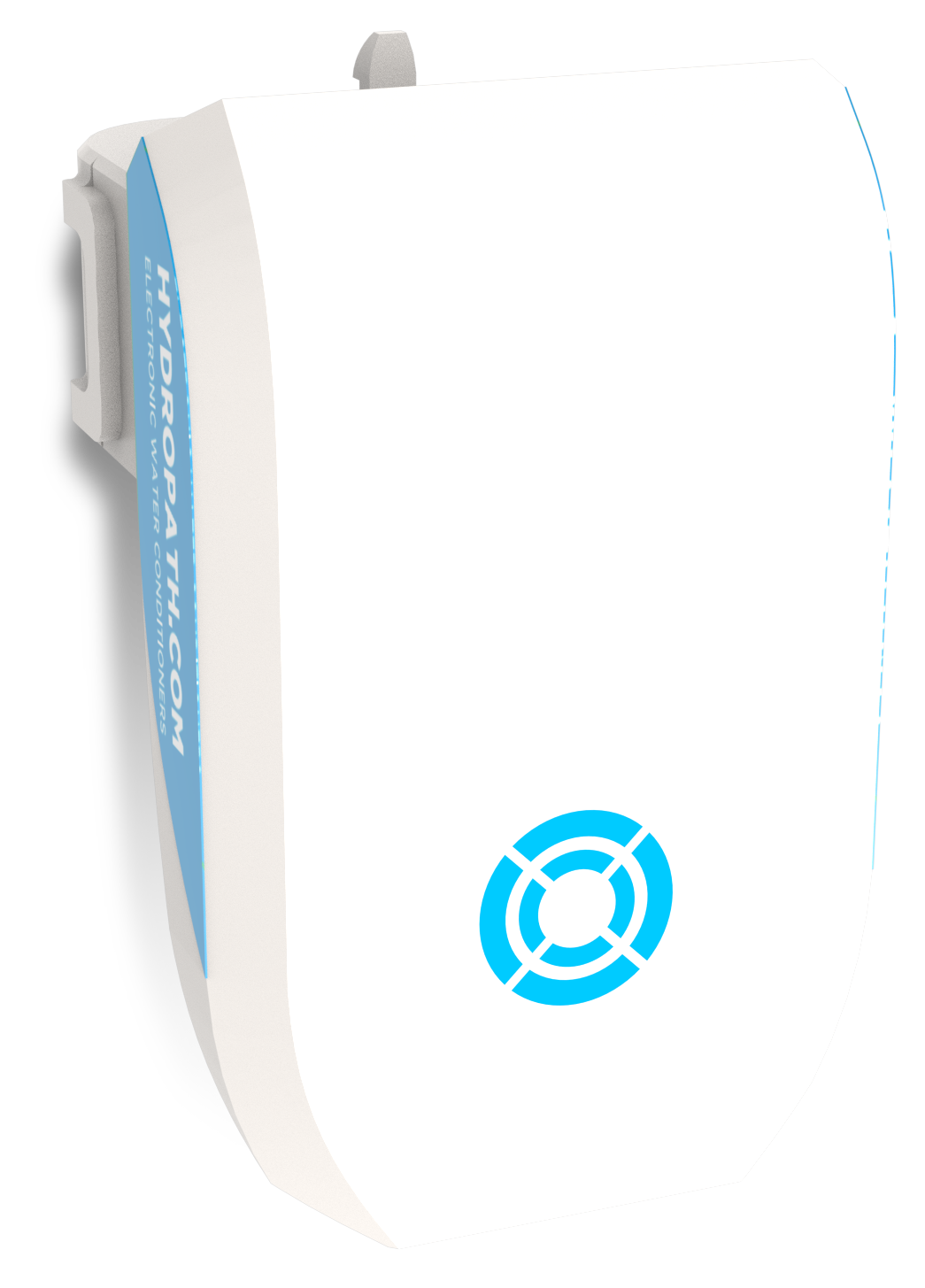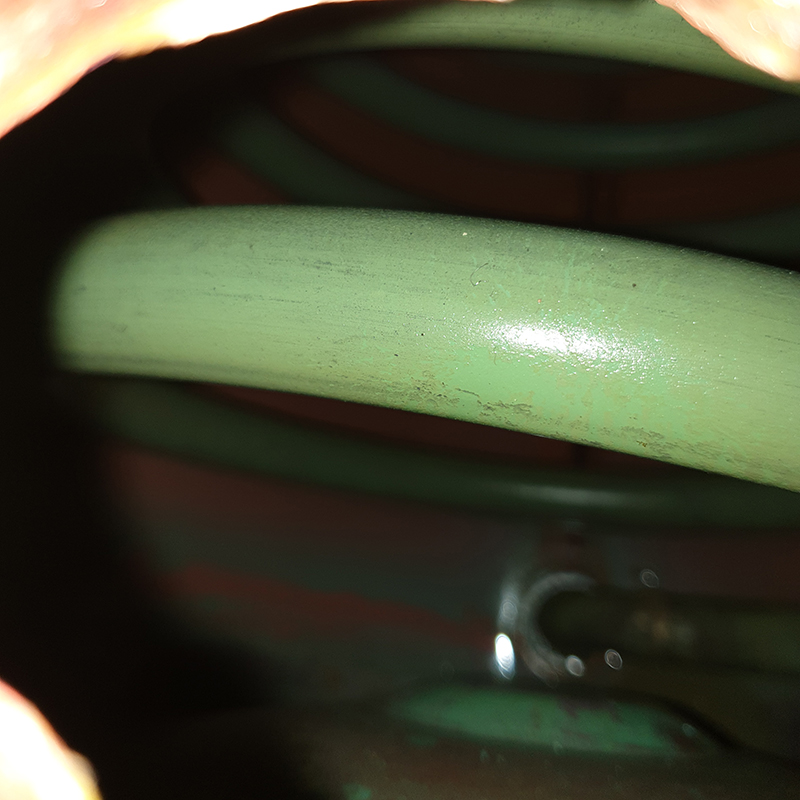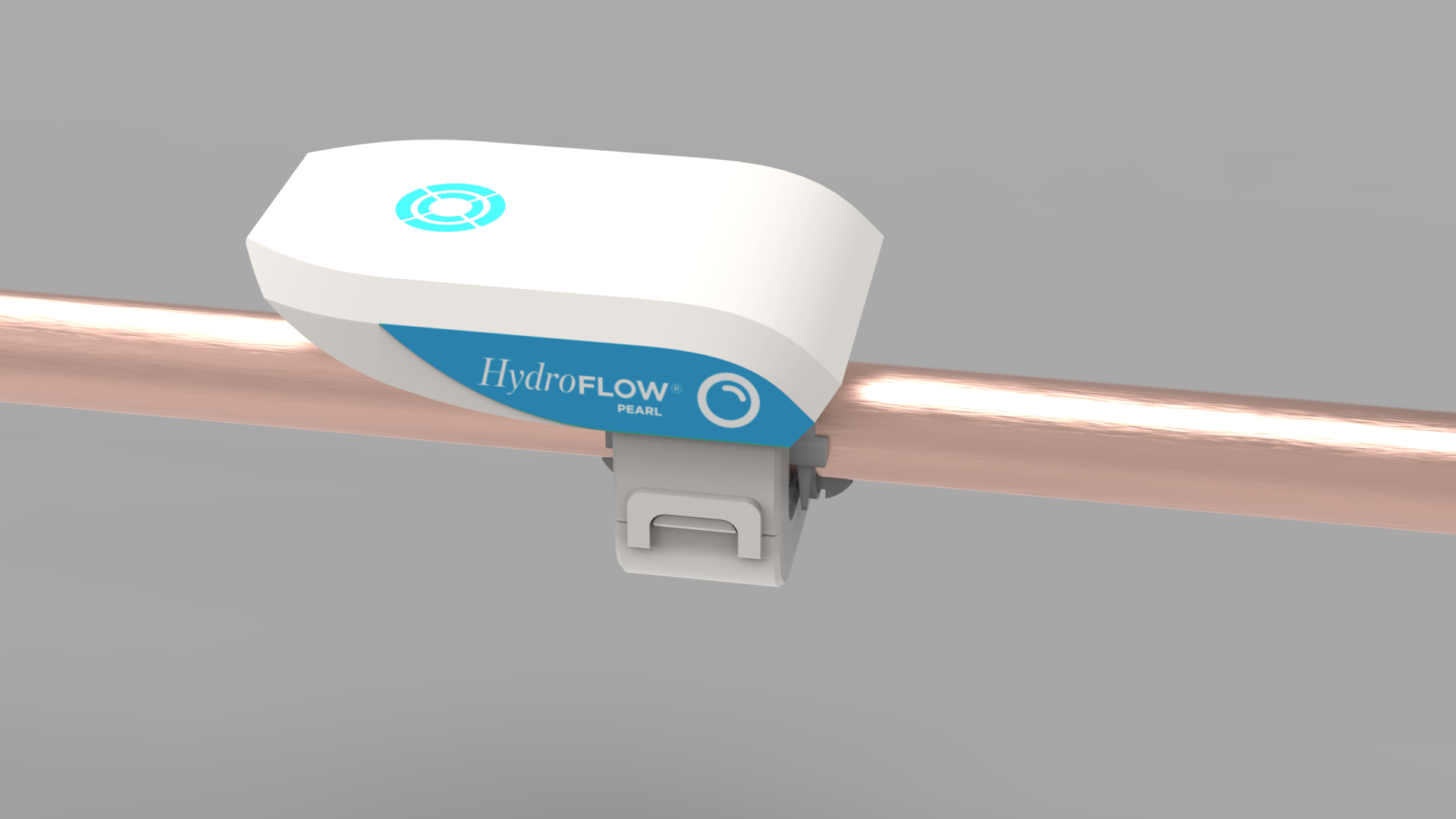
Experience the benefits of a scale-free home with the HydroFLOW® Pearl, your solution for domestic limescale protection.
Same innovative technology, new sleek design
HydroFLOW® Pearl
Limescale can be a major problem in hard water areas, causing blockages, requiring replacement of equipment, and decreasing heating efficiency and thereby increasing costs. Just 0.8mm of limescale can decrease heating efficiency by as much as 10%*.
Observations have shown that the use of a HydroFLOW® Pearl may over time, lead to a reduction in the existing and problematic hard encrusted limescale from heating surfaces. Less limescale means greater efficiency.
Domestic Limescale Protection
The HydroFLOW® Pearl, an upgrade from the HS38, first developed in the UK in 1992, represents the pinnacle of domestic limescale protection.
With its innovative patented design and unique, electronic signal, the HydroFLOW® Pearl is suitable for installation in houses of up to four bedrooms, and can protect combination boilers as well as vented and unvented cylinders.
The HydroFLOW® Pearl is designed to protect against hard limescale deposits in domestic pipelines and on heating elements and surfaces, to protect appliances such as dishwashers and washing machines, and to make limescale-stained taps, sinks and bathtubs easier to clean.

Benefits of the HydroFLOW® Pearl water conditioner
Chemical-free technology
With its innovative patented design and unique, electronic signal, the Pearl is a cost effective and green solution for conditioning water.
Protects your appliances
Designed to protect your appliances such as boilers, dishwashers and washing machines, and to make limescale-stained taps, sinks and bathtubs easier to clean.
Saves you money
The HydroFLOW® Pearl is designed to reduce limescale in your home, allowing you to be more energy efficient, saving money on bills.
Sold in over 40 countries worldwide
"We only use and promote equipment we have confidence in, and we choose the HydroFLOW® Pearl for limescale control."

Protecting the heart of your home
Two cylinders were removed from neighbouring houses in the hard water area of Farringdon, South Oxfordshire. The plumber (Andrew Mugleston) noticed one was much heavier than the other and opened them up to see why.
The heavier cylinder (left) contained lots of hard scale which would have reduced efficiency and loss of hot water volume.
The lighter cylinder (right) had been protected by a HydroFLOW® Pearl, and the cylinder and coil remained clear of limescale, keeping them operating at maximum efficiency.

Without HydroFLOW®

With HydroFLOW®

FAQ’s
While the HydroFLOW® HS38 unit worked fantastically to prevent limescale and keep boilers running smoothly, we felt it was time to do a visual refresh and bring the look of the unit in line with its effectiveness. We’ve also taken the opportunity to make a few quality-of life improvements, especially in terms of ease of fitting.
The HydroFLOW® Pearl is suitable for homes with up to 4 bedrooms. Larger houses will benefit from the HydroFLOW® Pearl Plus
The unit will fit a pipe of up to 24mm external diameter, and will work for any pipe smaller than this.
Water which is pumped to houses contains minerals. The level of these minerals will vary, depending on the geological make-up of the surrounding area, the way in which the water has been sourced (it may be ground water or surface water) and how it has been filtered for human consumption. In areas with ‘hard water’ (see map and explanation below), the water generally contains a relatively high amount of minerals when it reaches the home.
When water is rapidly heated, such as in a domestic heating system, this causes the minerals contained within the water to no longer be dissolved in the water and to stick to nearby surfaces (such as to the inside of a pipe, or to the plates of a heat exchanger element). Over time, layers of these mineral deposits build up and cause scaling or ‘furring’ in the plumbing system.
When heating surfaces are covered with scale, their ability to transfer heat into the water is reduced. As a consequence, the efficiency of the system is affected. This has a knock-on effect on your domestic energy bills in your home.
Additionally, the presence of limescale on taps, in sinks, in bathtubs and inside kitchen appliances can necessitate intensive cleaning on a regular basis. This regular removal of hard scale deposits by cleaning can be time-consuming and may also involve the use of hazardous or unpleasant chemicals.
See our below map for an at-a-glance guide to hard water areas in the UK and Ireland.
Hard water is characterised by leaving residual scum marks on the inside of cups, bathtubs and sinks, and by taking longer to create suds when soap is added to it. It is also often said to leave a chalky aftertaste in the mouth. Limescale is a very common occurrence in homes situated in hard water areas.
However, pockets of hard water can still occur in areas which are deemed to have soft water, depending on the source of the water supply (which can sometimes be unexpectedly changed by your supplier, for example during shortages) and on the specific geological conditions of an area.
You may therefore still see limescale occurring in your home even if you live in an area which generally has soft water.

The HydroFLOW® Pearl is a patented electronic water conditioner. It is a piece of equipment which fits around pipework and transmits an electronic signal into the water contained within. The signal propagates around the entire pipe system and causes the limescale present in the water to form into loose clusters. When the water is heated these clusters form crystals in suspension in the water which normally wash away with the flow, so that they no longer adhere to the inside of the pipework or to any other surfaces. Over time (depending on flow rate, water parameters, amount of heating etc), existing limescale which has already been formed in the system will begin to erode, again washing away with the flow of the water.
The HydroFLOW® Pearl is environmentally friendly and easy to install – it involves no use of chemicals and requires no cutting or rearrangement of pipework. The HydroFLOW® Pearl unit runs off a standard power supply – all units are supplied with a standard plug and 3 metre-long power cable.
Unlike water softeners, the HydroFLOW® Pearl does not chemically alter the water. This means that the minerals are all still present. When the water is heated the minerals will form as powder. In most cases, this is washed away with the flow of water.
However, if the flow rate is low, then a small amount of this powder can build up over time, for instance in the bottom of a hot water cylinder, with the amount depending on the flow rate, hardness of the water and system configuration. If desired, this powdery residue can be dealt with by an occasional drain down or cleaning of the system.
You may require the installation of a slightly more powerful unit.
Please contact the UK office or your local dealer if you are not based in the UK.
If you need assistance with preventing limescale or biofouling, or if you wish to improve filtration in a commercial or industrial application (such as in a cooling tower, swimming pool, water treatment plant or other setting), please take a look at the rest of our product range and contact the UK office or your local dealer if you are not based in the UK.
Installation Video
